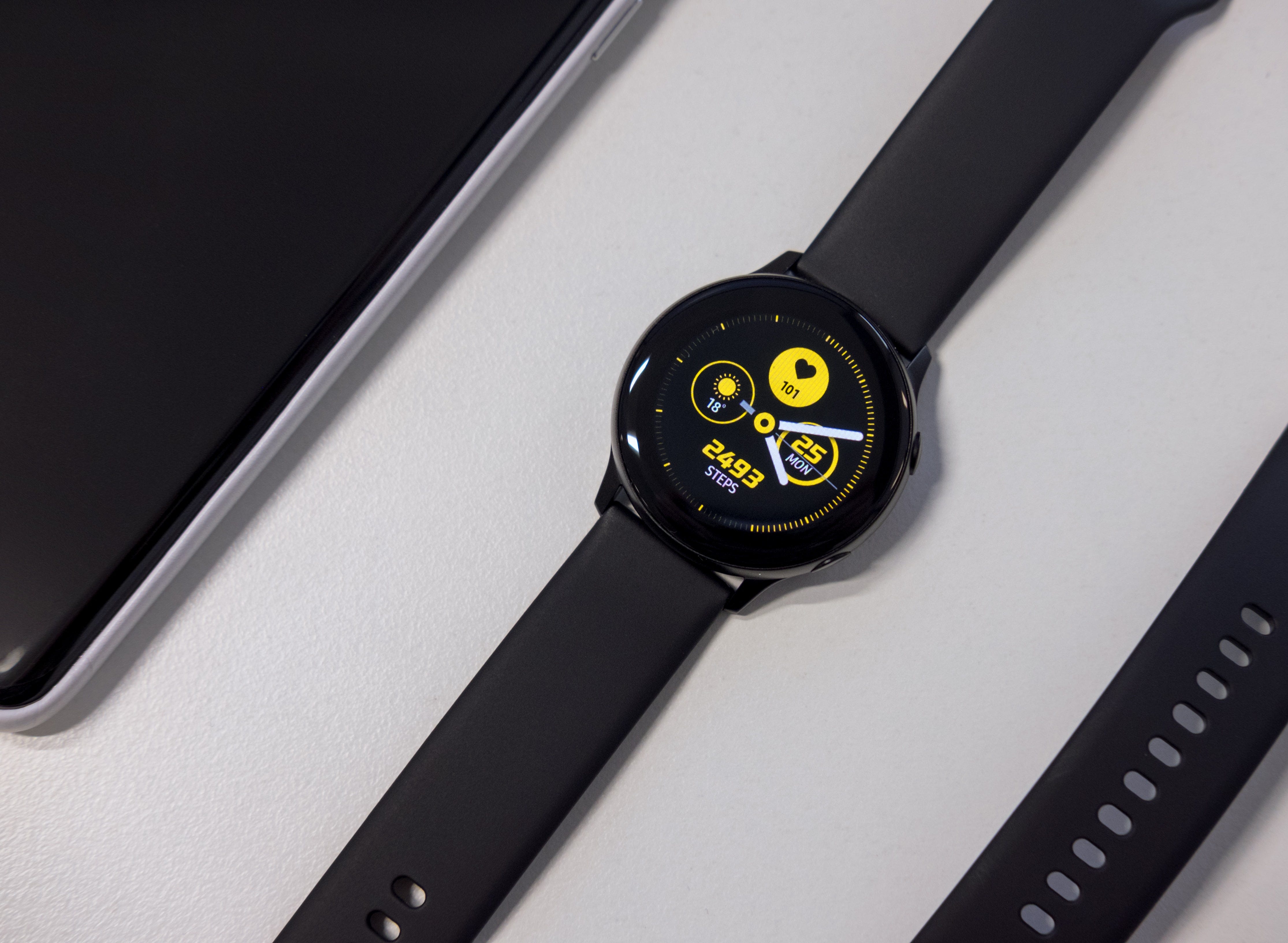未越獄設備提取數據
Health data is collected every time you have your phone in your pocket. Apple or Android, the phones are equipped with a pedometer that counts your steps. Hence, health data is recorded. This data could be your one free data mart for a simple Machine Learning or some other project related to Health data. It’s yours and free to use!. Let’s see how we can export data from the Samsung S-Health App.
每當您將手機放在口袋中時,都會收集健康數據。 在Apple或Android上,手機配有計步器,可以計算您的步數。 因此,記錄健康數據。 該數據可以是簡單機器學習或其他與健康數據相關的項目的免費數據集市。 它是您的,免費使用! 讓我們看看如何從Samsung S-Health App導出數據。
從手機導出 (Exporting from Phone)
The data download feature is available in your Samsung health app.
三星健康應用程序中提供了數據下載功能。
- Open health app 打開健康應用
- Open the left side panel — click on the settings wheel 打開左側面板-單擊設置輪
Find “Download personal data” button
找到“下載個人數據”按鈕
Follow instructions (you’ll need to login) and click Download
按照說明進行操作(您需要登錄),然后單擊下載。
- You’ll be shown with the location to find your health data 系統會向您顯示可以找到您的健康數據的位置
This probably is the easiest thing to do. However, understanding the data is a bit complicated. Let’s go through each of the file and its content to understand how Samsung health app stores data.
這可能是最容易的事情。 但是,了解數據有點復雜。 讓我們瀏覽每個文件及其內容,以了解Samsung Health App如何存儲數據。
導出數據 (Exported Data)
You will see the following set of files with data. In place of T you’ll see the export timestamp. In the files folder, you’ll see the profile picture image. In the folder named jsons, you can find the JSON objects for data referred in the CSV files (I’ll not talk about JSONS in this article). Please note that the data columns of CSV files will also contain the package extension com.samsung.health. However, for the simplicity of the text, I will ignore when I explain the content of the CSV files.
您將看到以下帶有數據的文件集。 代替T您將看到導出時間戳。 在文件文件夾中,您將看到個人資料圖片圖像。 在名為jsons的文件夾中,您可以找到CSV文件中引用的數據的JSON對象(本文中不再討論JSONS)。 請注意,CSV文件的數據列還將包含軟件包擴展名com.samsung.health 。 但是,為了文字簡潔起見,當我解釋CSV文件的內容時,我將忽略它。
com.samsung.health.device_profile.T.csv com.samsung.shealth.preferences.T.csv com.samsung.health.floors_climbed.T.csv com.samsung.shealth.report.T.csv com.samsung.health.food_info.T.csv com.samsung.shealth.rewards.T.csv com.samsung.health.height.T.csv com.samsung.shealth.sleep.T.csv com.samsung.health.sleep_stage.T.csv com.samsung.shealth.social.leaderboard.T.csv com.samsung.health.user_profile.T.csv com.samsung.shealth.social.public_challenge.T.csv com.samsung.health.water_intake.T.csv com.samsung.shealth.social.public_challenge.detail.T.csv com.samsung.health.weight.T.csv com.samsung.shealth.social.public_challenge.extra.T.csv com.samsung.shealth.activity.day_summary.T.csv com.samsung.shealth.social.public_challenge.history.T.csv com.samsung.shealth.activity.goal.T.csv com.samsung.shealth.social.public_challenge.leaderboard.T.csv com.samsung.shealth.activity_level.T.csv com.samsung.shealth.social.service_status.T.csv com.samsung.shealth.best_records.T.csv com.samsung.shealth.stand_day_summary.T.csv com.samsung.shealth.breathing.T.csv com.samsung.shealth.step_daily_trend.T.csv com.samsung.shealth.caloric_balance_goal.T.csv com.samsung.shealth.stress.T.csv com.samsung.shealth.calories_burned.details.T.csv com.samsung.shealth.stress.histogram.T.csv com.samsung.shealth.exercise.T.csv com.samsung.shealth.tracker.heart_rate.T.csv com.samsung.shealth.exercise.weather.T.csv com.samsung.shealth.tracker.pedometer_day_summary.T.csv com.samsung.shealth.food_frequent.T.csv com.samsung.shealth.tracker.pedometer_event.T.csv com.samsung.shealth.food_goal.T.csv com.samsung.shealth.tracker.pedometer_recommendation.T.csv com.samsung.shealth.goal.T.csv com.samsung.shealth.tracker.pedometer_step_count.T.csv com.samsung.shealth.goal_history.T.csv com.samsung.shealth.insight.milestones.T.csv com.samsung.shealth.permission.T.csv
jsons
files來自傳感器的健康數據 (Health Data from Sensors)

These are the files that contain data from the sensors including heart rate data and steps from the Galaxy Watch and the Phone itself. Step counts are collected from pedometer and accelerometer sensors. Heart rate is measured through the PPG (Photoplethysmogram) sensor in your watch. For these data, you have to look into the following files.
這些文件包含來自傳感器的數據,包括心率數據以及Galaxy Watch和Phone本身的步驟。 步數是從計步器和加速度計傳感器收集的。 心率通過手表中的PPG(光電容積描記)傳感器測量。 對于這些數據,您必須查看以下文件。
心率數據 (Heart Rate Data)
Heart rate data are included in the following file.
心率數據包含在以下文件中。
com.samsung.shealth.tracker.heart_rate.T.csvThe important information in this file is the update_time and heart_rate columns. You will also find the min and max values along with end_time, which shows the end of the recording.
該文件中的重要信息是update_time和heart_rate列。 您還將找到最小和最大值以及顯示記錄結束的end_time 。

Out of curiosity, I plotted a histogram of my heart rates to see how my heart behaves. It seems I have a heart rate in the range 65–80bps. Googling resulted in “A normal resting heart rate for adults ranges from 60 to 100 beats per minute”. I guess the histogram makes sense. One of the main concerns, when I bought the watch, was to keep a note of my heart rate. Because, usually at the doctors, I have an above-average heart rate with a panicked person’s blood pressure. Read here if you want to know more about that scenario at Doctors.
出于好奇,我繪制了心率的直方圖,以查看我的心臟的行為。 看來我的心律在65-80bp s范圍內。 谷歌搜索導致“成年人的正常靜息心率范圍為每分鐘60到100次跳動” 。 我猜直方圖是有道理的。 當我購買手表時,主要要考慮的問題之一是記下我的心律。 因為通常在醫生那里,我的心跳速度高于平均水平,而患者的血壓卻感到恐慌。 如果您想在Doctors上了解有關該場景的更多信息,請閱讀此處 。

步跟蹤數據 (Step Tracker Data)

Step tracker data are available in the following files;
以下文件中提供了步驟跟蹤器數據;
com.samsung.shealth.step_daily_trend.202008162231.csv
com.samsung.shealth.tracker.pedometer_step_count.202008162231.csv
com.samsung.shealth.tracker.pedometer_day_summary.202008162231.csv
In the step_daily_trend you will see the daily values with step count, calories burnt, distance walked and the speed. However, in the pedometer_step_count you will find all the step information including running steps, walking steps. Basically this file contains the pedometer tracking information. In the last file (pedometer_day_summary), you can find the daily step summaries. Which might be enough for most of the tasks.
在step_daily_trend中,您將看到每日數值,包括步數,燃燒的卡路里,行走的距離和速度。 但是,在pedometer_step_count中,您將找到所有步驟信息,包括跑步步驟,步行步驟。 基本上,此文件包含計步器跟蹤信息。 在最后一個文件( pedometer_day_summary )中,您可以找到每日步驟摘要。 對于大多數任務而言,這可能就足夠了。
Let’s try to do some simple analysis of these data.
讓我們嘗試對這些數據進行一些簡單的分析。

The above observation sort of aligns with the seasonal changes here in Australia. During the time June to December, we have cold temperatures. From December to June, we have much better running weather. However, COVID-19 came into play here in Canberra during the April and May, hence the low activity. However, in June my wife and I walked and tried to get back on the shape so we can eat out a lot during our anniversary period.
上述觀察結果與澳大利亞這里的季節性變化相吻合。 在6月至12月的這段時間里,氣溫較低。 從12月到6月,我們的跑步天氣要好得多。 但是,COVID-19在4月和5月在堪培拉開始活動,因此活動量很低。 但是,在六月,我和妻子走過路,試圖恢復身材,這樣一來周年紀念期間我們可以吃很多東西。
Step count isn’t quite a generic measure of activity. One might workout in a gym without any step count yet burning a lot of fat. Such activities are usually measured by calories using the heart rate sensor. However, as you can see below, my calorie counts are somewhat correlated with the step counts (There is a slight deviation of the X-axis, but they are close). This is because the only workout I prefer is running or jogging.
步數并不是一般的活動量度。 一個人可以在健身房鍛煉而無需花費很多時間,卻消耗了大量脂肪。 通常使用心率傳感器通過卡路里來測量此類活動。 但是,正如您在下面看到的那樣,我的卡路里數與步數有一定的相關性(X軸略有偏差,但是很接近)。 這是因為我更喜歡的唯一鍛煉是跑步或慢跑。

Something interesting is visible. On days I have run, I haven’t made many steps. In contrast, on walking days I have made it over 10000 steps. I wonder, whether I get tired on days I walk or the running steps aren’t counted for daily step count. Something I shall investigate in another article though.
有趣的東西是可見的。 在跑步的日子里,我并沒有采取很多步驟。 相反,在步行的日子里,我走了10000多步。 我想知道,無論是在走路的日子里是否累了,還是每天的跑步步數都不算在內。 不過,我將在另一篇文章中對此進行調查。
其他資訊 (Other Information)
There is more information including, weight and carb intakes. For that, you’ll have to have them recorded manually. However, there are some insightful data in the following file.
有更多信息,包括體重和碳水化合物攝入量。 為此,您必須手動記錄它們。 但是,以下文件中有一些有見地的數據。
com.samsung.shealth.exercise.weather.T.csv
However, in order to use this file, you’ll have to combine this with the exercise file. That is for another article!
但是,為了使用此文件,您必須將其與練習文件結合在一起。 那是另一篇文章!
I hope this article would make a useful outcome of the data that you most often get rid of. Happy reading!
我希望本文能為您最常用的數據帶來有益的結果。 祝您閱讀愉快!
翻譯自: https://towardsdatascience.com/extract-health-data-from-your-samsung-96b8a2e31978
未越獄設備提取數據
本文來自互聯網用戶投稿,該文觀點僅代表作者本人,不代表本站立場。本站僅提供信息存儲空間服務,不擁有所有權,不承擔相關法律責任。 如若轉載,請注明出處:http://www.pswp.cn/news/390951.shtml 繁體地址,請注明出處:http://hk.pswp.cn/news/390951.shtml 英文地址,請注明出處:http://en.pswp.cn/news/390951.shtml
如若內容造成侵權/違法違規/事實不符,請聯系多彩編程網進行投訴反饋email:809451989@qq.com,一經查實,立即刪除!

![[BZOJ2599][IOI2011]Race 點分治](http://pic.xiahunao.cn/[BZOJ2599][IOI2011]Race 點分治)










)





